Jerusalem: The City risen from the ashes
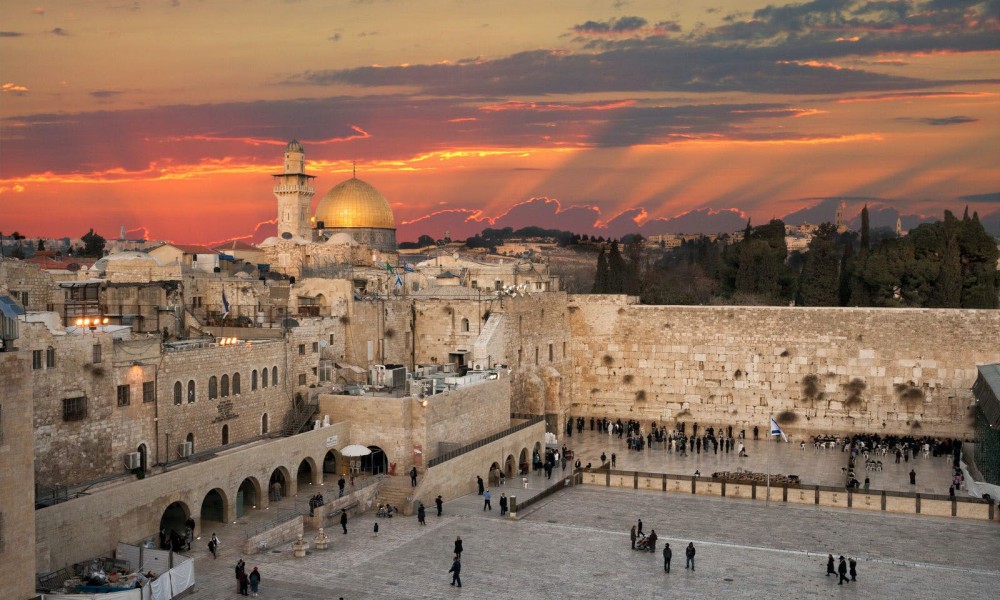
Wailing Wall
The name of the famous Wailing Wall derives from translation of the Arabic el-Mabka, or "Place of Weeping," the traditional Arabic term for the wall. This description stemmed from the Jewish practice of coming to the site to mourn and bemoan the destruction of the Temple built by the King Solomon. This temple used to keep an important relic of the Jewish people - the divine commandments. Once the destroyed shrine was rebuilt: the King Herod built a 488-foot wall to strengthen the temple. According to the laws of that time, Herod had to obtain permission for building from the Roman rulers. The King sent a messenger with the news, and meanwhile began to build a wall of stones fit tightly to each other, establishing every new row with inner ledge, due to which the wall is slightly inclined. When construction was completed, the messenger came from Rome with response. Message from Octavian Augustus declared: "If building have not been started, do not build. If started, destroy it. If finished, leave it as it is."
Of course, Herod left everything "as it is", but time did not spare Jerusalem. The second temple was burned by the Roman general Titus Flavius, and Judaea was razed to the ground. The Wailing Wall was the only structure left by Flavius on Jewish land in memory of his "heroism".
Two hundred years after destruction of the Temple, the sages completed the Babylonian Talmud in which they recorded an interesting legend: One day God promised the Israelites that the wall would never be destroyed, and "Shehina" (divine presence) would remain forever next to it. Another prediction favoured by the Israelis is the prophecy of Jeremiah: invaders would destroy the Temple of Jerusalem, but its west wall would not be touched.
Until the 16th century no one prayed near the Wailing Wall, people lived there, traders run their shops with goods, and only when Israel came under the rule of the Ottoman Empire, the "Kotel Maaravi" became known as a holy place. Around that time, a tradition spread among Muslims: supposedly, this is where the Prophet Muhammad is said to have ascended to heaven.
There is a modern tradition to write wishes on small pieces of paper and place them between the cracks in the stone for God to answer. Once a month all notes are collected and buried near the Mount of Olives - for not a single request disappear without a trace.
To approach the Wailing Wall one must be properly dressed: women cover their heads and shoulders and pray on the right side, and men wear a hat kippah and go to the left side of the Wall. On Saturdays and holidays men are allowed to have fun: they dance with the Torah next to the Wailing Wall. Women are not allowed to resort to such liberties.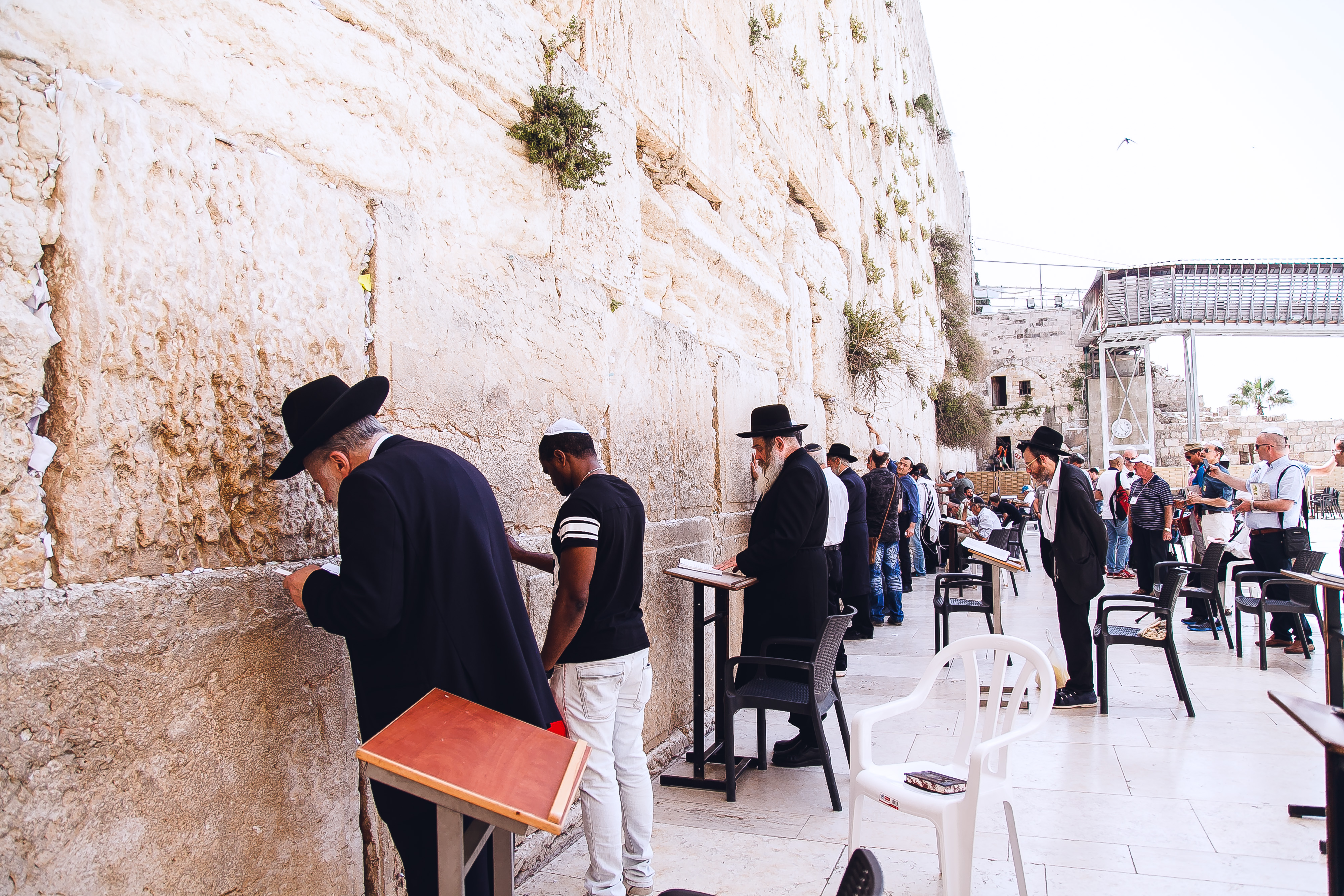 Photo pinterest.com
Photo pinterest.com
Mount Zion
The Mount Zion was first mentioned in the Bible in Prophetic Books by Isaiah, Jeremiah and Psalms by King David. "And be it so: the great crowd, all the people turn against the mountain of Zion", wrote Isaiah. And the "Lamentations" states: "Because of the mountain of Zion, which is desolate, the foxes walk upon it." However, historians believe that the Mount Zion reported by the scriptures was located either in the upper part of the city, or in place of the Mount Moriah. A hill, which is now known as Zion, for the first time was named by Saint Helena by mistake
Jerusalem is bubbling over with deep feelings that underlie human existence: faith, love of neighbour, betrayal, grief, purification through suffering. It was a scenery for one of the most dramatic stories combining faith and betrayal in a collision. Jesus and his disciples had their Passover Seder at this site on Mount Zion where Jesus shared bread with the apostles and washed their feet, and then foreseen that one of those present would betray him.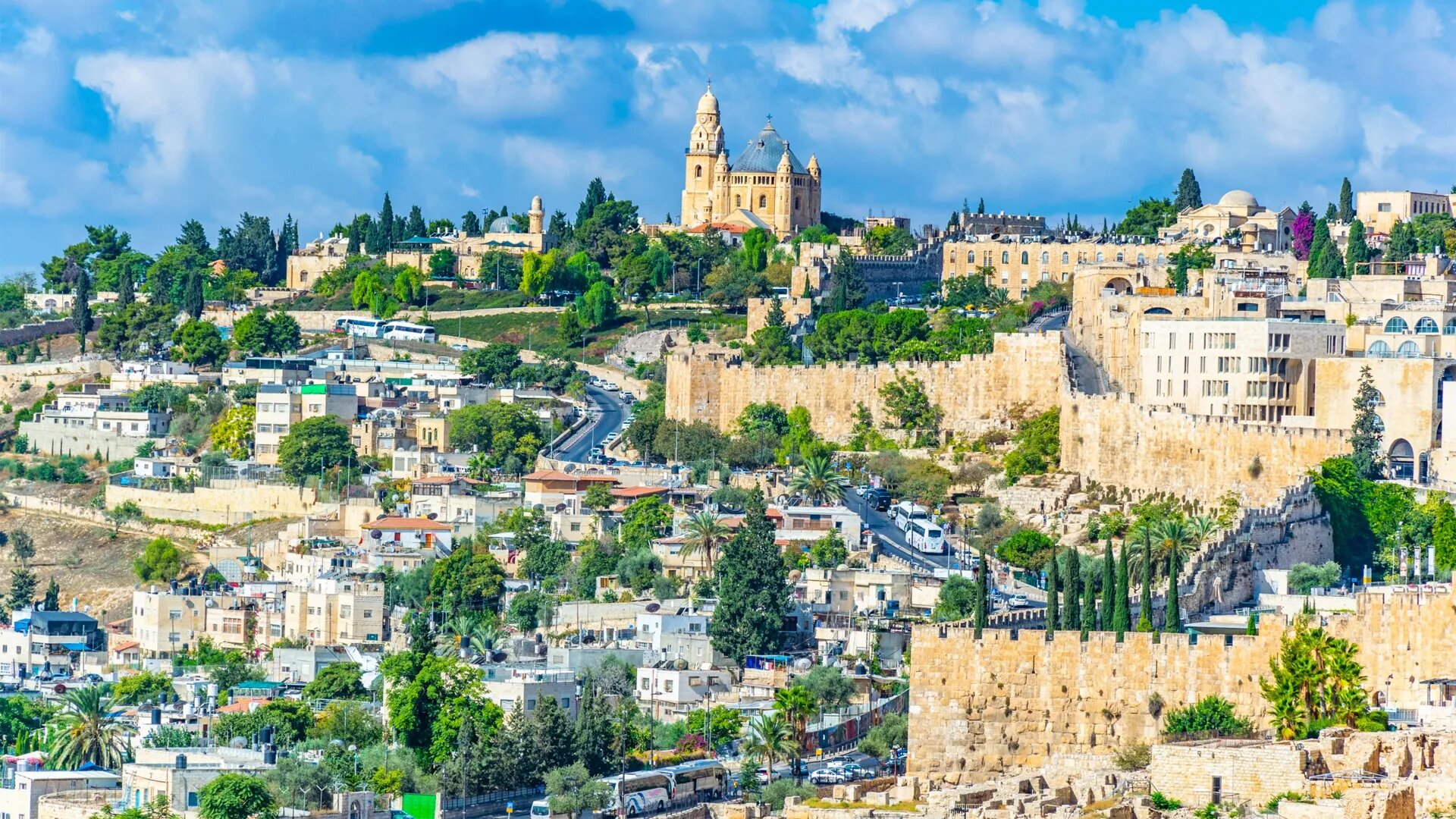 Photo mzwpc.org
Photo mzwpc.org
Today’s tourists or pilgrims also can experience the "divine presence effect" and visit the Last Supper Room. The truth is that in the XVI century this place was used by the Franciscan monks to build a church, which in Latin is called the Coenaculum. However, the Franciscans did not manage to hold many services there: they were expelled by the Muslims who turned the Room into a mosque. Nowadays the Last Supper Room belongs to the Israeli Ministry of Religious Services.
Gardens of Gethsemane
Within 20-minute walking distance from the Mount Zion there is the Garden of Gethsemane stretching at the foot of the Mount of Olives. Here Jesus was praying at night before the crucifixion. The Basilica of the Agony (Church of All Nations) is surrounded by a stone wall, behind it eight big old olive trees are growing. Three of them were checked by the method of radiocarbon analysis, and it revealed that they were about nine hundred years old. According to legend, just before the crucifixion Jesus prayed looking at those fruits, juicy symbol of life.
The name Gethsemane derives from Hebrew word "gat shemanim" meaning "oil press". In addition to the Garden of Gethsemane, the surrounding area is home to the Church of All Nations, The Ascension Chapel and the Church of Mary Magdalene.
By the way, the first pilgrimage to these places was made by Saint Helena, mother to Constantine the Great, in 326 she built the first temples on the Tomb of Jesus, and in the place of his ascension - on the Mount of Olives. Jerusalem is heaving with pilgrims following the footsteps of Saint Helena. All of them claim there is "divine presence", i.e. reverent ecstasy that arises when looking at the holy places.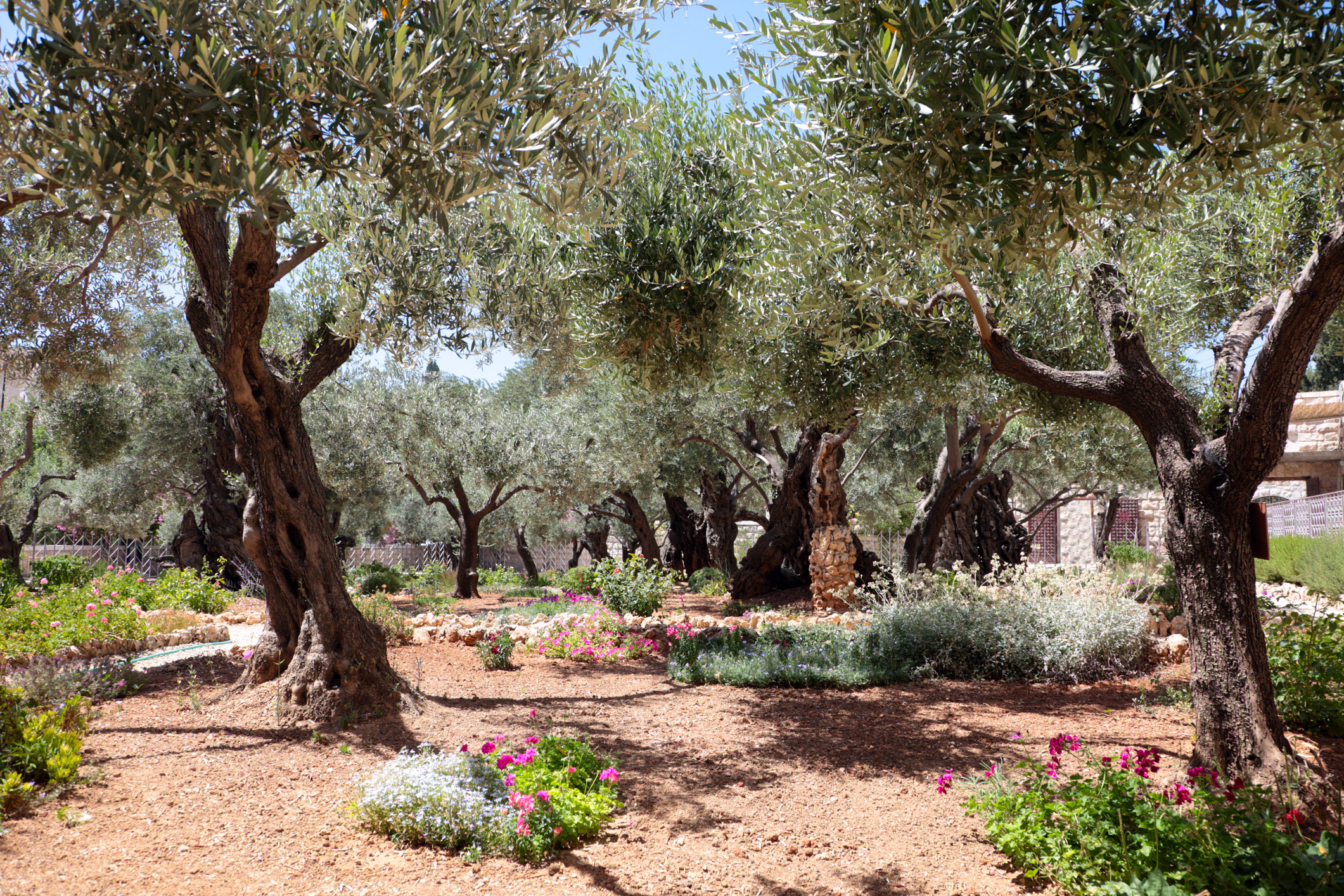 Photo americamagazine.org
Photo americamagazine.org
Church of the Holy Sepulchre
One of the most important churches in the Christian world is the Church of the Holy Sepulchre. It is said to have been built on the spot where Jesus left his earthly body. There is a beautiful legend about Mary who arrived at Jerusalem on the day of the Exaltation of the Holy Cross. The woman tried to enter the temple, but some supernatural power did not let her in. Then Mary knelt before the icon of the Mother of God and began to pray - and then she was able to get into the temple of the Church of the Holy Sepulchre.
Latter-day pilgrims say that the Church is a huge, complex structure consisting of forty buildings inside which it is easy to get lost, what can we say about the underground passages familiar only to the chosen ones!
The Church was assaulted three times. As noticed one of the pilgrims, "All world fanatics destroyed it one by one." The first church above the Holy Sepulchre was erected by Emperor Constantine the Great: it was important that the church would be "the more magnificent than all temples ever existing". Majestic shrine was destroyed by the Persian King Khosrow II. Unsuccessful was the attempt of the Patriarch of Jerusalem Modest to restore grandeur on the ruins - militant Arabs tore it to tatters. In the XII century Constantine Monomachos began to restore the church - this architectural monument survived intervention of the Crusaders, the grandiose plans of the Emperor Charles V, and finally burned in a fire in 1808.
Today's version of the Church of the Holy Sepulchre includes temple on the Calvary (or Golgotha), Chapel of the Holy Sepulchre and the Church of the Resurrection. Photo pinterest.com
Photo pinterest.com
Muslim Quarter
One of the most densely populated residential neighbourhoods of Jerusalem looks like a bazaar. Most of the buildings in the Muslim Quarter survived since the time of the Mamelukes and Turks. Located in the north-eastern part of the city, the Muslim Quarter is accessible from the east through the Lion Gate, from the south via the Temple Mount. And if you come from the west side - along the road of Damascus Gate - you get to the souk of sweets, spices, aromatic scents and, of course, Muslim clothing. Further, you find yourself in a place that enjoys enormous respect here - sacred courtyard ("Haram el-Sherif"). And this is due to two mosques located in the courtyard - Dome of the Rock and Al-Aqsa Mosque, the third holiest place in Islam behind Mecca and Medina.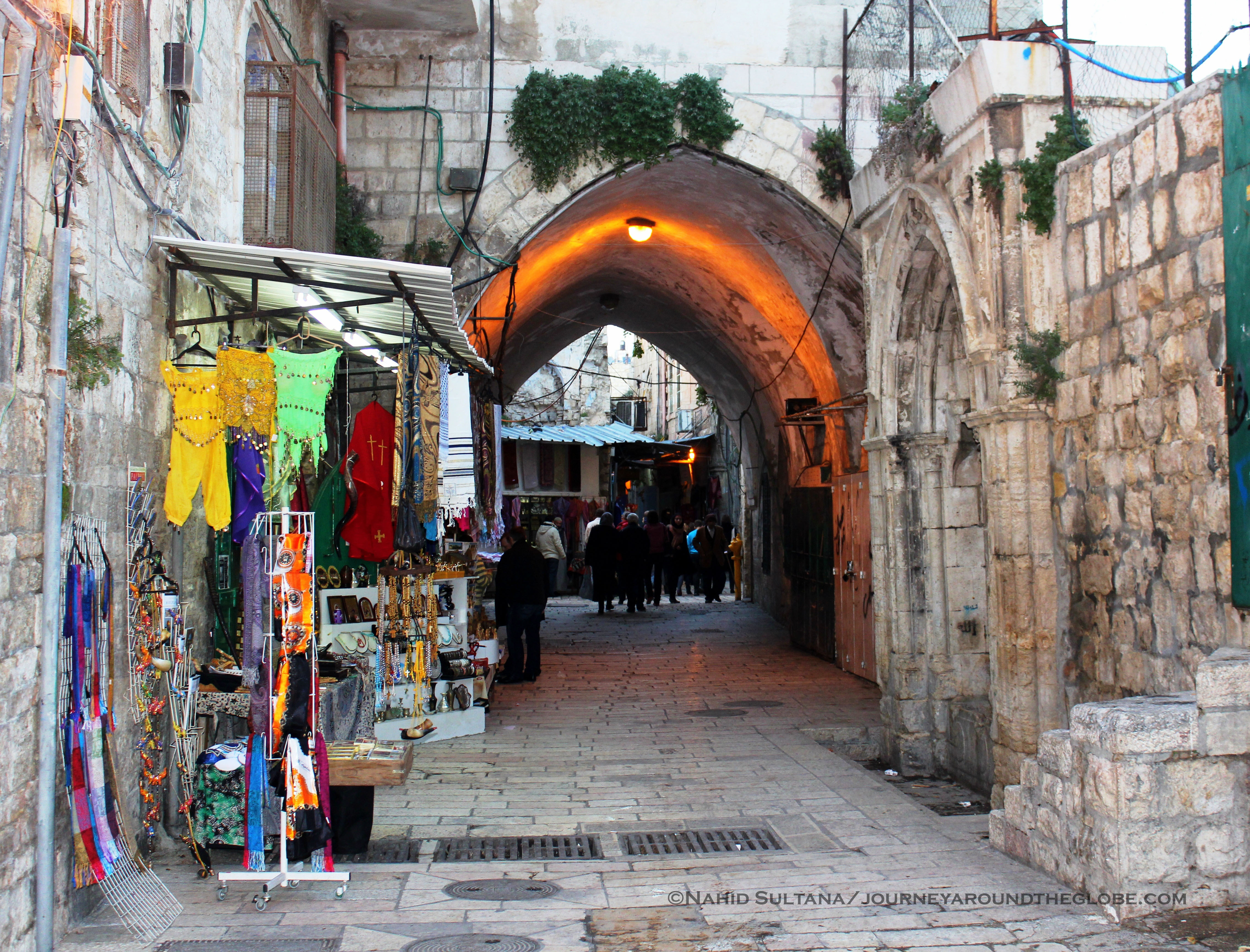 Photo journeyaroundtheglobe.files.wordpress.com
Photo journeyaroundtheglobe.files.wordpress.com
Unlike other places with a great history, the entrance to Jerusalem does not remind the museum and does not freeze visitors with "cold past." They say that only here one realizes the swiftness of events that people traditionally recall on the Easter eve. You step into stone corridors of old streets and get lost in a huge number of shops and small monasteries. The streets got narrower and wider all the way and, tired of rambling and remembering countless names, you immerse in a dim light of holly places and humbly go down the cramped stairs leading to dark corners.
Cover photo lonelyplanet.com





















